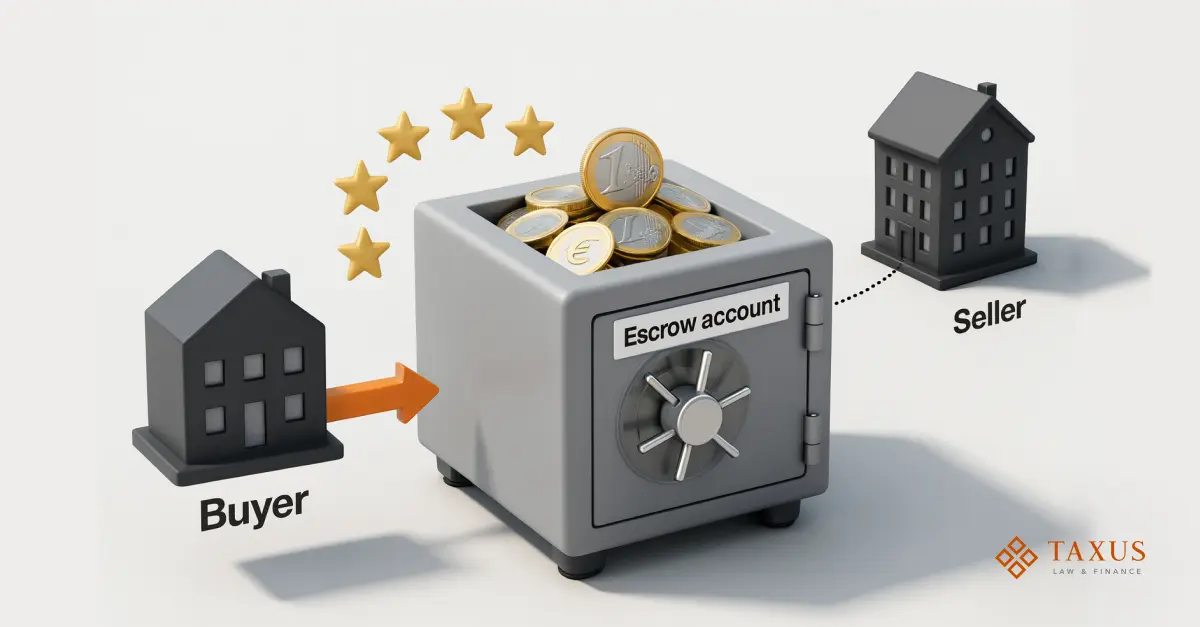Visa Vision 2025: AI, Digital Identity, and the Future of Payments


Visa’s strategic outlook for 2025 outlines an ambitious transformation of the global payment infrastructure, where artificial intelligence (AI), digital identity, and real-time security become the foundation of commerce. Visa has long ceased to be merely a card network: it positions itself as a technology and trust hub, enabling seamless, intelligent financial experiences. This evolution forces payment service providers (PSPs), banks, and fintech consultants to rethink their strategies to remain competitive in a new ecosystem where transactions are not just operations but part of a personalized, context-driven experience.
This transformation reflects broader market shifts: growing demand for seamless payments, stricter regulatory requirements for data protection, and the rapid sophistication of fraud models, often powered by AI itself. Visa addresses these challenges by integrating intelligent solutions that standardize complexity and expand the network’s responsibility for identity, dispute management, and transaction orchestration. For stakeholders, this is both an opportunity and a challenge: adapting to Visa’s new APIs and tools will be critical to maintaining market position.
This article analyzes seven key changes Visa is implementing in 2025, starting with the most powerful driver of transformation—AI-driven commerce and digital identity.
1. Introduction: Visa’s 2025 Shift – From Transaction Processor to Ecosystem Architect
In 2025, Visa is not merely adapting to market trends—it is redefining the nature of digital commerce, evolving from a traditional payment processor to an architect of an intelligent ecosystem. This shift is underpinned by new initiatives, such as AI-powered APIs, updated dispute resolution mechanisms (VAMP), and global integration of fintech innovations. Visa’s strategic focus is to become more than a transaction network—a platform that delivers intelligent data processing, identity verification, and predictive risk management, all in real time.
Why Now?
Visa’s transformation in 2025 responds to the fragmentation of the payment landscape and emerging market challenges. Visa standardizes complexity by offering AI-driven APIs that enable personalization, automation, and predictive risk analysis, boosting conversion rates by 10–15%. Key drivers of this shift include:
- “Invisible” Transactions: Consumers expect seamless payments in the metaverse or IoT devices.
- Regulatory Pressure: GDPR and CCPA demand enhanced data security and digital identity.
- AI-Driven Fraud: 15% of fraud attempts in 2024 leveraged AI, bypassing traditional protections.
- Integration Complexity: Merchants spend resources integrating multiple payment solutions.
Unlike traditional players focused on throughput, Visa invests in an intelligent ecosystem, integrating behavioral data (geolocation, transaction history) into the payment flow. PSPs and merchants that fail to adopt these APIs risk losing competitiveness to Apple Pay or Stripe, which already offer integrated solutions.
2. Intelligent Commerce and Digital Identity: AI, Biometrics, and Tokenization
In 2025, Visa advances in two key directions:
- Intelligent commerce, powered by artificial intelligence.
- Evolution of digital identity and authentication.
Intelligent Commerce: AI as a Conversion Driver
Visa’s Intelligent Commerce Suite is a set of AI-powered APIs enabling merchants, banks, and fintech apps to create context-driven experiences that go beyond traditional payments. By analyzing real-time data—such as transaction history, purchase frequency, or device type—these APIs deliver personalization that increases conversion by 10–15%. Key capabilities include:
- AI Shopping Agents: Predict customer needs, e.g., generating shopping lists based on past orders or planning trips based on preferences.
- Dynamic Offers: Adapt to customer intent in real time, replacing static marketing profiles.
- Tokenized Loyalty: Embeds rewards directly into transactions, using cloud-based tokens for security.
➡️ Example: Imagine a travel platform that not only offers dynamic pricing but also automatically rebooks a hotel in case of a flight delay—all within a tokenized transaction environment.
This level of automation requires merchants and PSPs to integrate Visa’s APIs. Without it, they risk falling behind competitors like Google Wallet or embedded wallets in TikTok and Instagram, which already offer similar features. For PSPs, traditional gateways that merely route transactions are becoming obsolete. The market values intelligent platforms capable of processing context and intent, and merchants failing to invest in AI will face lower conversion rates and higher marketing costs.
Digital Identity: Biometrics and Tokenization as the Foundation of Security
Visa is redefining digital identity by bringing verification closer to the user to meet global demands for fraud prevention and regulations like GDPR and PSD2. At the core are three tools combining security and convenience:
- Visa Payment Passkey: Uses FIDO2 standards for biometric authentication (fingerprint, facial recognition), eliminating passwords and reducing phishing risks.
- Tap to Add Card: Adds cards to devices via NFC and biometrics, cutting activation time and reducing cart abandonment by 15–20%.
- Cloud-Based Tokenization: Replaces card numbers with encrypted tokens reusable across channels, reducing fraud by 30%, especially in mobile economies like India and Brazil.
These tools are backed by data: according to Visa’s “Stay Secure Study” 2025, 73% of consumers prefer biometrics over PINs. Tokenization and biometrics not only enhance security but also boost merchant revenue through higher activation rates. For instance, in Europe, where PSD2 mandates two-factor authentication, the absence of biometric solutions can lead to fines or customer loss. Merchants that do not support passkeys or tokenization will face higher cart abandonment and dispute rates, even with robust fraud protection systems. PSPs that fail to integrate cloud-based tokenization will lose competitiveness, as tokens become the standard for online and mobile channels.
In summary, Visa is evolving from a passive processor to a predictive orchestrator, integrating AI, biometrics, and tokenization into a unified transactional experience. Merchants and PSPs must adapt or risk falling behind Apple Pay or Stripe. AI enhances not only security but also conversion and loyalty. Context-driven payments blur the lines between search, shopping, and settlement. Merchants must act as platforms, and PSPs must invest in intelligent gateways that recognize intent, context, and biometrics to stay in the game.
3. Intelligent Commerce and Digital Identity: AI, Biometrics, and Tokenization
In 2025, Visa strengthens risk management and transparency in commercial transactions through two key programs: the Visa Acquirer Monitoring Program (VAMP) and the Commercial Enhanced Data Program (CEDP). These initiatives not only improve operational efficiency but also align with Visa’s broader strategy of building an intelligent, secure payment ecosystem to address the challenges of a fragmented market.
VAMP: Visa Acquirer Monitoring Program
VAMP redefines risk and dispute management by introducing stricter controls and real-time transaction monitoring. The new unified dispute ratio has been lowered from 2.2% to 1.5%, pushing PSPs and merchants to leverage analytics to reduce chargebacks. The program rolls out in phases—from April 2025 to January 2026—giving market participants time to adapt but signaling stricter consequences for non-compliance.
VAMP targets high-risk industries, including:
- Cryptocurrency Transactions: Due to their volatility and anonymity.
- Gambling: Due to high chargeback rates.
- Travel Services: Due to frequent cancellations and disputes.
- Digital Goods: Due to verification complexities.
Real-time monitoring, powered by Visa’s AI analytics, detects anomalies like unusual transaction patterns and applies immediate measures, such as temporary restrictions for acquirers. For PSPs, this means investing in predictive analytics tools to avoid fines and loss of access to Visa’s network. Merchants in high-risk segments, like crypto or travel, must implement additional checks to meet the new standards.
CEDP: Data Transparency for B2B and B2G
The Commercial Enhanced Data Program (CEDP) replaces outdated Level 2/3 standards for B2B and B2G transactions, enhancing transparency through detailed data like invoice details, tax information, or product categories. The program carries a 0.05% fee but unlocks access to lower interchange rates, reducing costs for merchants. CEDP is particularly valuable for:
- SaaS Platforms: For detailing subscription transactions.
- Procurement Platforms: For automating contract management.
- Corporate Suppliers: For meeting large clients’ and government procurement requirements.
CEDP’s integration with Visa’s cloud-based tokenization ensures data security, while AI analytics enables automatic transaction classification, simplifying reporting. For example, a corporate supplier can transmit detailed tax data via CEDP, reducing audit risks and building client trust. For merchants, this means operational cost savings but requires system upgrades to handle enriched data.
In conclusion, VAMP and CEDP are part of Visa’s broader strategy to create an intelligent payment ecosystem combining AI, tokenization, and data standardization. VAMP pushes PSPs and merchants in high-risk segments to invest in analytics to reduce disputes, or face fines and restrictions. CEDP offers savings for B2B/B2G merchants but demands integration of new data standards. Together, these programs enhance security and efficiency but require market participants to adapt. Those who fail to invest in intelligent gateways and enriched data risk losing competitiveness to platforms like Stripe or Mastercard, which are advancing similar initiatives.
4. Expanding Access: Small Merchants, Open Banking, and A2A
In 2025, Visa expands access to payment solutions, focusing on micro-merchants and modern financial tools like open banking and account-to-account (A2A) payments. Through initiatives like Visa Accept, as well as support for BNPL, pay-by-bank, and real-time payments (RTP), Visa promotes financial inclusion and competes with fintech startups, offering merchants lower costs and instant settlements. These efforts align with Visa’s broader strategy of building an inclusive, intelligent payment ecosystem.
Visa Accept: Payments for Micro-Merchants
Visa Accept enables micro-merchants to accept contactless payments via smartphones using tap-to-pay technology, eliminating the need for traditional POS terminals. This initiative targets emerging markets, where small businesses like street vendors or freelancers are often excluded from payment infrastructure due to high equipment costs. Key benefits of Visa Accept include:
- Low Entry Barrier: No specialized devices required, only an NFC-enabled smartphone.
- Financial Inclusion: Visa estimates that in 2024, 40% of small merchants in countries like India or Nigeria lacked access to digital payments.
- Fast Activation: Registration and setup take less than 10 minutes.
For example, a street vendor in Lagos can accept payments via smartphone, using Visa’s tokenization for security. This expands their customer base and reduces reliance on cash, which accounts for up to 70% of transactions in emerging markets. For Visa, this captures new market segments, but for traditional PSPs, it’s a challenge: they must adapt their gateways to support such solutions or risk losing ground to fintech platforms like Square or PayPal.
Open Banking and A2A: Competing with Fintech
Visa actively supports open banking and A2A payments, integrating products like BNPL, pay-by-bank, and RTP to compete with fintech companies like Klarna or Revolut. These solutions offer merchants cost savings and speed but require PSPs to modernize infrastructure. Key areas include:
- BNPL (Buy Now, Pay Later): Enables merchants to offer installment plans, boosting conversion by 20% in e-commerce.
- Pay-by-Bank: Direct bank account payments reduce fees by 30–40% compared to card transactions.
- RTP (Real-Time Payments): Ensures instant settlements, critical for small businesses with limited working capital.
For example, a European online store can integrate pay-by-bank via Visa’s APIs, allowing customers to pay directly from their accounts with lower fees than card payments. RTP ensures merchants receive funds within seconds, improving liquidity. These solutions integrate with Visa’s cloud-based tokenization for security and AI analytics for risk prediction, reducing fraud. For B2B merchants, A2A complements CEDP, enabling the transmission of detailed data alongside instant settlements, simplifying reporting and reducing operational costs.
For sellers, this means lower costs and faster access to funds, but for traditional PSPs, it poses integration challenges. Many gateways are not ready for A2A or RTP, giving an edge to fintech platforms already offering similar features. PSPs must invest in Visa’s APIs or risk becoming mere transaction “pipelines,” losing added value.
In summary, Visa Accept and support for open banking and A2A demonstrate Visa’s commitment to expanding payment access and competing with fintech startups. For micro-sellers, this is a chance to enter the digital economy, and for large sellers, it offers savings through BNPL, pay-by-bank, and RTP. However, traditional PSPs face the challenge of integrating new APIs, or they risk losing ground to Square, Klarna, or Revolut. These initiatives integrate with AI, tokenization, and CEDP, creating an ecosystem where security, speed, and accessibility are the standard. Sellers and PSPs that fail to adapt risk losing market share in an increasingly competitive landscape.
5. Strategic Recommendations for Adapting to Visa 2025
Visa’s 2025 initiatives—from AI-driven commerce to VAMP, CEDP, and A2A—require merchants, PSPs, and fintech teams to adapt immediately to boost conversion, reduce risks, and compete with fintech giants like Stripe or Klarna. These recommendations will help stakeholders integrate Visa’s new standards and prepare for the future of payments.
For Merchants: Optimizing Transactions and Loyalty
Merchants, from micro-businesses to B2B players, must adopt Visa’s tools to reduce costs and comply with regulations. Key actions:
- COF Tokens for MITs: Card-on-File tokens simplify subscriptions, reducing declines by 10% (e.g., for SaaS platforms).
- VAMP Monitoring: Track disputes to meet the 1.5% threshold, using AI alerts for high-risk segments like crypto.
- CEDP Integration: For B2B merchants, CEDP lowers interchange rates by 0.1%, ensuring detailed data for government clients.
Failure to implement these solutions will lead to VAMP fines or loss of customers expecting personalization and security.
For PSPs and Acquirers: Modernizing Gateways
PSPs and acquirers must upgrade infrastructure to support Visa’s intelligent solutions and compete with Adyen or Revolut. Recommendations:
- VAMP Dashboards: Monitor disputes in real time to avoid fines for exceeding the 1.5% threshold.
- AI Agent Support: Integrate APIs for authorizing transactions by AI agents, such as in travel platforms.
- A2A and RTP: Add support for pay-by-bank and real-time payments for instant settlements with 30% lower fees.
Without modernization, PSPs risk becoming mere “pipelines,” losing margins to fintech platforms.
For Fintech Teams and Developers: Innovating Through APIs
Fintech teams can leverage Visa’s ecosystem to build competitive products. Key actions:
- Visa Developer Portal: Develop AI-driven commerce flows, such as agents for e-commerce.
- Verification Tools: Integrate Visa Payment Passkey and tokenization to support biometrics.
- A2A Products: Create BNPL or pay-by-bank solutions via Visa’s APIs to compete with PayPal.
Ignoring Visa’s portal will set fintech teams back against leaders like Mastercard or Stripe.
Preparing for the Future: A Look Toward 2030
Visa’s 2025 initiatives lay the foundation for “invisible” payments in IoT and the metaverse, where AI, tokenization, and A2A will become standard. By 2030, 30% of transactions will occur via smart devices, and integration with CBDC and DeFi will intensify competition with blockchain platforms. Merchants and PSPs investing in Visa’s APIs now will gain an edge in the seamless economy, reducing fraud to 0.5% and boosting conversion. Delays will lead to market share loss to Apple Pay, Klarna, or DeFi solutions.
Visa is transforming into an orchestrator of an intelligent ecosystem, where AI, biometrics, and A2A blur the lines between search, shopping, and settlement. Merchants, PSPs, and fintech teams must integrate COF, VAMP, CEDP, and A2A by the end of 2025 to avoid fines, enhance loyalty, and compete with fintech leaders. By acting now, stakeholders not only meet 2025 requirements but also prepare for the “invisible” economy of 2030.

Looking for a reliable payment processing system?
Order selection of a payment solution.










